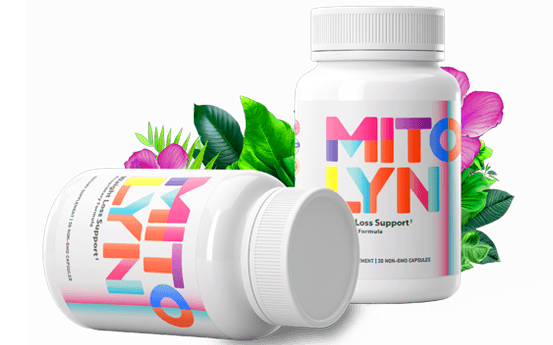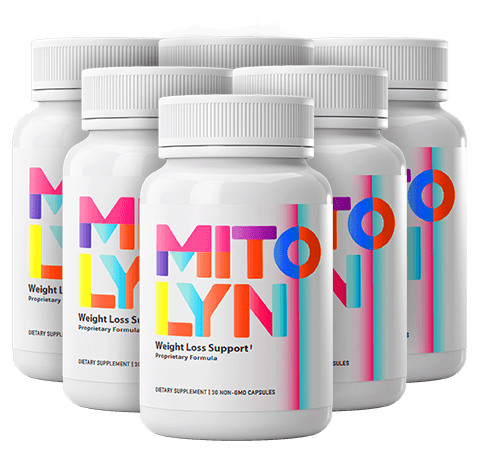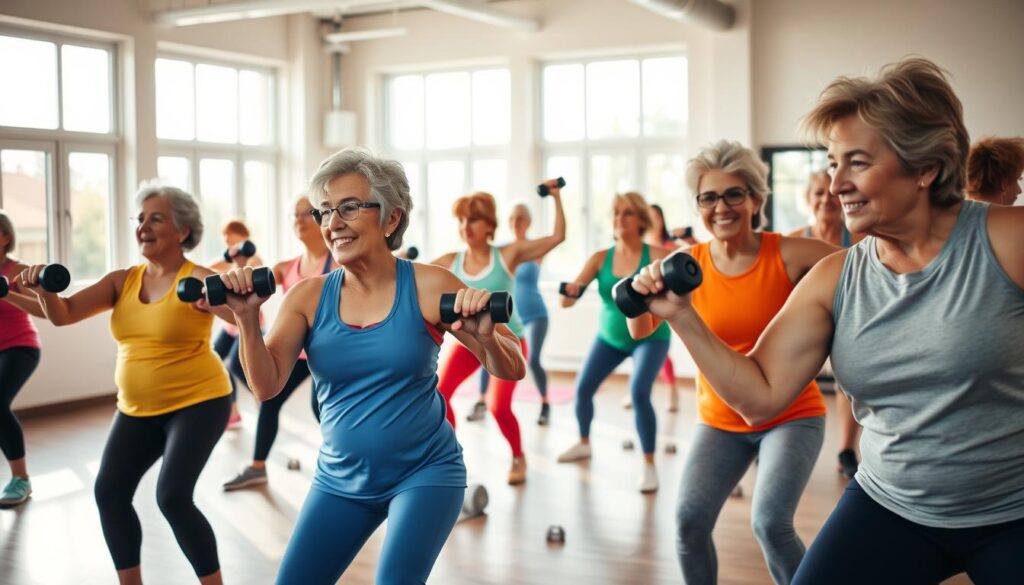
At 92, Edna Giordano still drives herself to the gym four days a week. She squats, climbs stairs, and laughs at how her grandkids ask for workout tips. Her secret? Consistency. At 65, she started moving more—now she’s proof that it’s never too late to gain strength. You, too, can feel this energy. As you read this, imagine the possibilities: stronger muscles, fewer aches, and the confidence to keep doing what you love.
Life after 50 brings changes—tiredness hits quicker, stairs feel steeper. But science shows regular movement fights these effects. Strength training alone can slash fall risks by building bone density. Cardio workouts like walking or swimming boost heart health. Even small efforts matter. This article shares real strategies to reclaim energy and vitality, backed by experts like Dr. Sims and programs like Curves Circuit.
Think you’re too old? Edna’s story—and research from Tufts University—proves muscles rebuild at any age. Every step you take, every squat you master, adds up. Let’s turn “I can’t” into “I can.”
Key Takeaways
- Strength training cuts fall risks by improving balance and muscle strength.
- Edna Giordano’s 27-year gym journey shows starting at 65+ builds lifelong benefits.
- Older women workout routines need cardio, strength, and flexibility for full-body health.
- Even 20 minutes of daily movement boosts mood and reduces diabetes risk.
- NEAT (non-exercise activity) like walking counts—helping burn calories and prevent heart disease.
Why Exercise Becomes Even More Important As You Age
Staying active is crucial as you get older. Fitness routines for older women are not just for looks. They are essential for fighting off age-related changes.
The Science Behind Age-Related Energy Decline
After 65, muscle loss speeds up, losing up to 5% each decade. Slower metabolism and hormonal changes after menopause also drain energy. One in three adults over 65 falls each year, often because of weak muscles and balance issues.
Bone density also decreases, especially for women after menopause. They lose up to 2% of bone mass each year, increasing the risk of fractures.
How Regular Movement Counteracts Aging Effects
Exercise can fight these changes. Strength training helps rebuild muscle and reduces fall risks by 30%. It also boosts metabolism.
The National Institute on Aging suggests 150 minutes of moderate exercise and strength training twice a week. For example, walking 30 minutes daily can lower Alzheimer’s biomarkers. Resistance workouts with diet help lose fat without losing muscle, as shown by Villareal’s research.
Programs like SilverSneakers offer safe, guided routines for older adults.
“Starting at 60, I went from needing a walker to hiking trails. Exercise gave me back my life.”
Success Stories from Women Who Started After 50
- Participants in the Fit & Strong program reduced knee pain by 40% after eight weeks of gentle yoga and strength drills.
- Women in a 2019 study reported sharper focus and better moods after joining group fitness classes—proof movement lifts spirits as much as muscles.
It’s never too late to start. Even small steps, like 10-minute walks thrice daily, add up. Your body’s worth the effort—and the science shows it’s worth it.
Understanding Your Changing Body: What Happens After 50
After 50, your body changes in ways that affect your energy and strength. Hormones like estrogen drop, leading to muscle loss and weaker bones. But, these changes don’t mean you have to slow down. They’re chances to try exercises for mature women that meet your needs.

- Muscle Mass Decline: After 30, you lose 3–8% muscle per decade. Strength training 2–3 times a week rebuilds muscle, boosting metabolism and energy.
- Bone Strength: Estrogen drops weaken bones, raising osteoporosis risk. Weight-bearing moves like walking or yoga help maintain bone density.
- Metabolism Shifts: Slower metabolism means targeted exercises can help manage weight and prevent belly fat linked to heart disease risks.
“Regular exercise can reduce heart disease risk by improving cardiovascular health,” advises the American Heart Association, which recommends 150 minutes of moderate cardio weekly for older adults.
Exercises for mature women also help with joint health. Stiffness or fatigue? Gentle stretches and balance drills lower injury risks while improving mobility. Even small steps, like 10-minute walks, build momentum. Focus on movements that align with your goals, whether toning muscles, boosting stamina, or easing joint stress.
Benefits of an Older Women Workout Routine
A senior women’s exercise program does more than help you lose weight. It leads to a stronger, more vibrant life. Let’s explore how exercise improves your health, starting with your body.
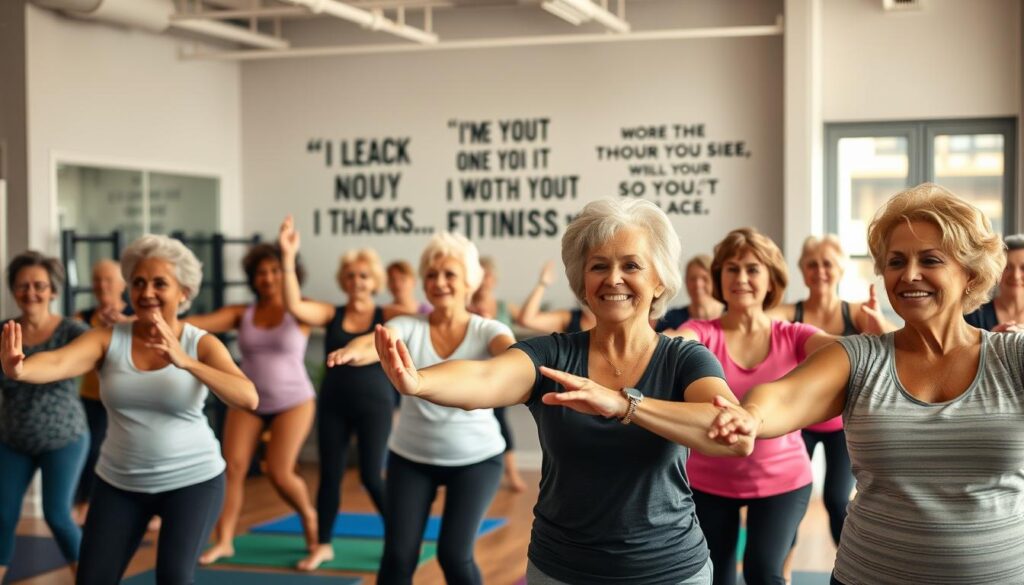
Resistance training can reduce Alzheimer’s risk by improving brain health, according to a 2023 Frontiers in Neuroscience study.
Physical Gains You’ll Notice
Strength training helps fight muscle loss with age. Up to 30–40% of muscle is lost after 30. Doing exercises with 3–8 pound weights 2–3 times a week can make bones stronger. This reduces fracture risks by 30%.
Improved balance from exercises like single-leg stands also helps. It lets you climb stairs or carry groceries easily.
Mind & Mood Lift
Sweating releases serotonin and dopamine, which improve your mood and fight depression. A regular workout routine can also sharpen your memory and focus. This helps you stay sharp for things like grandkids’ school plays or travel.
Social Boosts
Group classes help you make friends. Think about laughing during yoga or high-fiving after strength circuits. These connections fight loneliness, making workouts feel like fun gatherings.
Long-term Wins
The CDC says strength training helps with arthritis and diabetes. Over time, your heart stays healthy, your metabolism speeds up, and you become more independent. Imagine hiking trails, gardening, or dancing at weddings, all thanks to a routine that fights aging.
Ready to start? A 30-minute session 3x weekly builds strength. Start with machines or light weights, then get stronger at your own pace. Your body—and mind—will thank you.
Getting Started: Essential Health Considerations
Starting a fitness journey at any age needs careful planning. This is especially true for effective workouts for elderly ladies. Before you start, take these three steps to make sure your new routine fits your health and lifestyle.
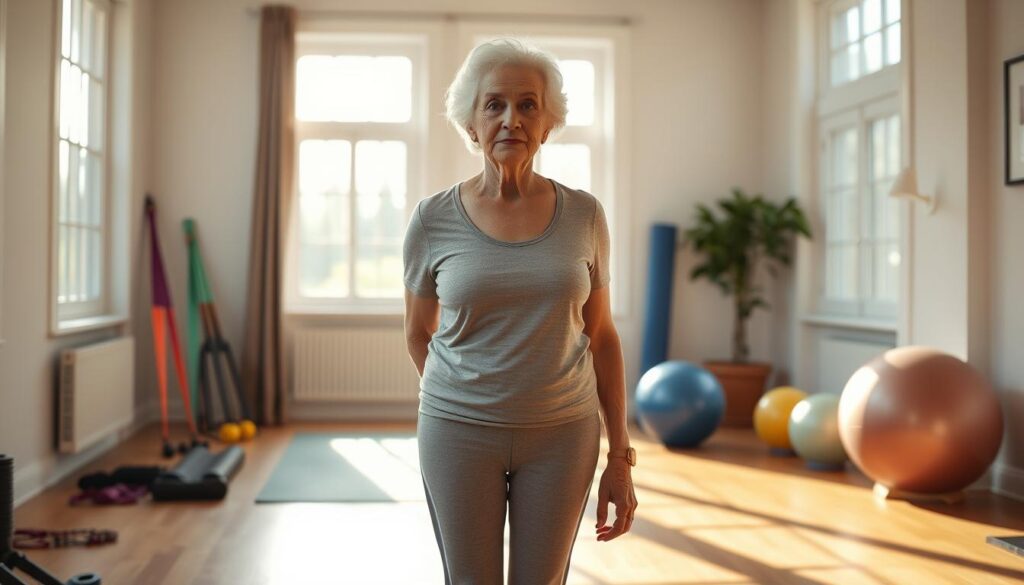
Consult Your Doctor First
Talk to your doctor before starting if you have heart disease or diabetes. Ask them:
- “What exercises should I avoid?”
- “Can I safely lift weights with osteoporosis?”
- “How do I adjust routines for joint pain?”
Know Your Fitness Baseline
Find out what you can do with simple tests:
- Balance: Can you stand on one leg for 10 seconds?
- Strength: How many chair stands can you perform in 30 seconds?
- Endurance: Can you walk for 5 minutes without stopping?
Set Goals That Inspire Action
“Aim for progress, not perfection.”
Write goals like: “Walk 10 minutes daily this week” or “Complete 2 strength sessions weekly.” Use a pedometer or phone app to track steps. Remember, even small activities like gardening or climbing stairs help meet your 150 weekly minutes of moderate activity.
Pair goals with rewards—like a favorite tea after a workout—to stay motivated. Every step forward builds confidence for bigger achievements.
Strength Training Exercises That Restore Vitality
Lifting weights isn’t just for athletes. For older women workout routines, it rebuilds muscle lost to aging. It also keeps bones strong. Studies show even small, consistent efforts can reverse muscle decline that starts after age 30. Let’s break down safe, effective moves tailored to your goals.
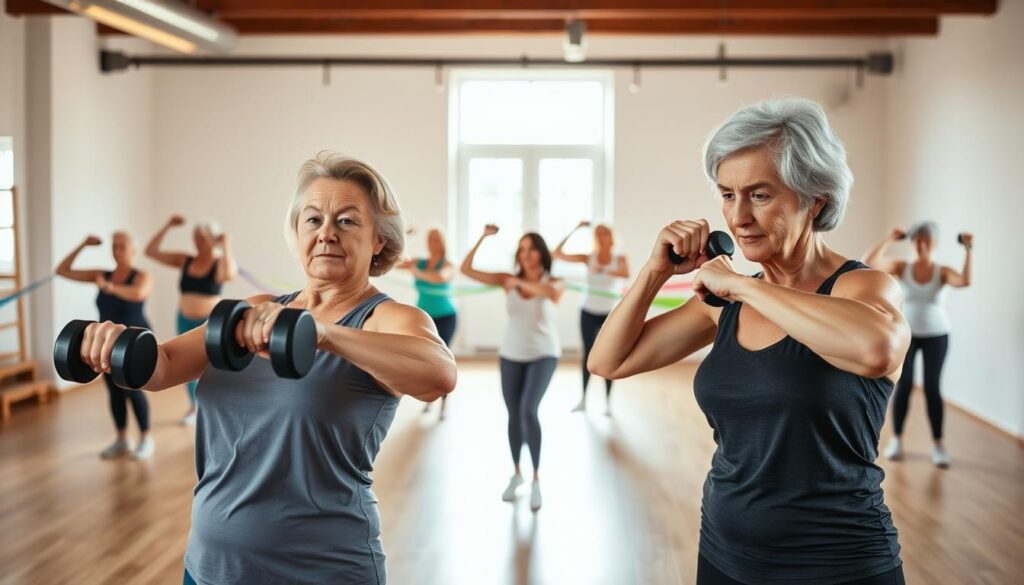
“Starting with light weights transformed how I feel. I can now lift groceries without straining,” says Edna Giordano, a 65-year-old fitness enthusiast. Her routine mixes machines and free weights to target all major muscle groups.
Begin with these exercises, using light weights or resistance bands:
- Overhead Press: Builds shoulder and core strength. Start with 5-pound weights, lifting slowly to full extension.
- Assisted Pull-Ups: Use a chair or resistance bands to assist bodyweight pulls, improving grip and back muscles.
- Tricep Extensions: Hold light dumbbells behind your head, extending arms upward to tone arms and improve posture.
| Exercise | Muscle Groups | Starting Reps |
|---|---|---|
| Seated Rows | Back, Biceps | 2 sets of 10 reps |
| Leg Press | Quads, Glutes | 3 sets of 8 reps |
| Plank Rows | Hold 10-15 seconds per set |
Start with 20-minute sessions twice weekly. Increase resistance gradually as you gain strength. Always prioritize form over weight—proper technique reduces injury risk. Pair these moves with cardio for a balanced older women workout that boosts metabolism and energy levels. Remember: progress isn’t about lifting heavy, but feeling stronger day by day.
Flexibility and Balance: The Keys to Injury Prevention
Keeping flexible and balanced is key for fitness routines for older women to stay safe. Gentle yoga and stretches help reduce stiffness. Balance exercises also lower the risk of falls, which is important since over 25% of seniors fall each year. Let’s see how these practices help keep you independent.
Gentle Yoga Poses for Mature Bodies
Begin with yoga poses like cat-cow or seated forward bends. Use chairs or blocks to avoid straining. Edna Giordano, a 92-year-old fitness lover, starts with dynamic stretches before strength exercises. She then cools down with static stretches to help her recover.
Balance Exercises to Prevent Falls
Start with simple moves like standing on one foot or shifting weight side-to-side. Gradually increase the time you hold each stance, aiming for 10 seconds, then 30. Daily practice strengthens your core and boosts confidence. Remember, 3 million seniors visit ERs yearly because of falls, making these exercises crucial.
Stretching Routines for Improved Mobility
- Dynamic stretches: Arm circles or leg swings before workouts to prep muscles.
- Static stretches: Hold calf or hamstring stretches post-exercise for 10-30 seconds to boost recovery.
Follow the American Heart Association’s advice of 150 weekly minutes of activity. Break it into 10-15 minute sessions. Small, consistent efforts make a big difference!
Cardio Options That Energize Without Overwhelming
Cardio is key for energy and health. But finding the right exercises for mature women is important. These options are easy on the joints and good for the heart and mood.
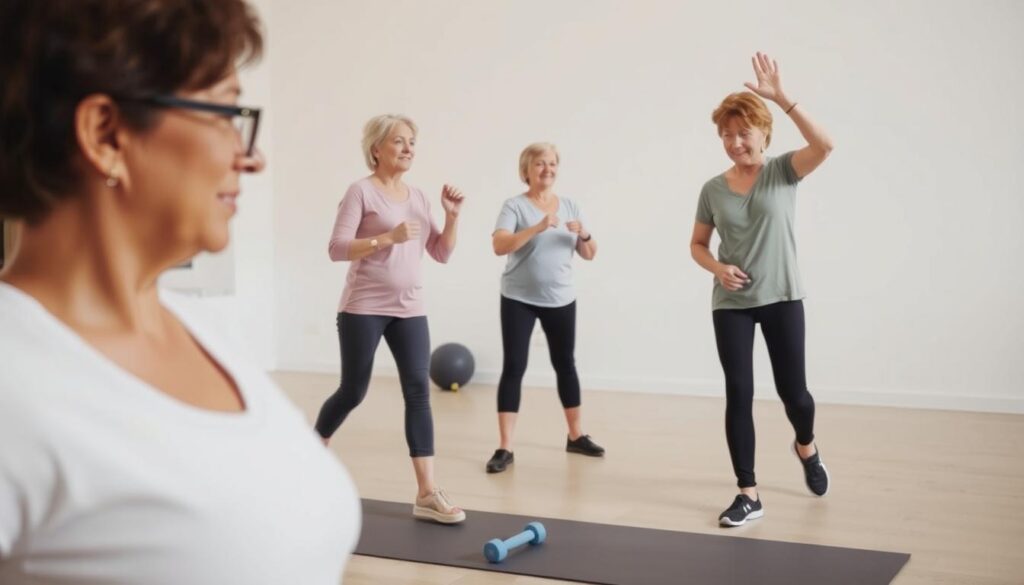
“Walking is the second focus of my workout routine, with treadmill warm-ups to maintain heart health,” says Edna Giordano.
Low-Impact Aerobic Activities
These exercises are great for your heart without hurting your joints:
- Stationary Cycling: Burns calories while protecting knees and hips
- Elliptical Training: Smooth motion for safe calorie burn
- Water Aerobics: Resistance builds muscle without impact
Water-Based Exercises for Joint Protection
Water exercises are easy on the joints. Try:
- Swimming laps to strengthen shoulders and core
- Aqua jogging for high-intensty without impact
- Water aerobics classes for social interaction and endurance
Walking Programs That Progress Gradually
Walking is easy and can be made harder. Start with 10-minute walks and get longer:
- Interval walks: Alternate 1-minute fast, 3 minutes slow
- Nordic walking: Poles boost calorie burn by 20%
- Hill walks: Build leg strength and stamina
| Exercise | Key Benefits | Starting Tips |
|---|---|---|
| Stationary Cycling | Reduces joint stress, improves heart health | Start 10–15 minutes daily |
| Water Aerobics | Buoyancy protects joints | Search local pools or gyms |
| Nordic Walking | Burns 20% more calories than regular walking | Use poles for proper form |
Do strength training too for best results. Always check with a doctor before starting. Small steps add up to big changes.
Creating Your Perfect Senior Women’s Exercise Program
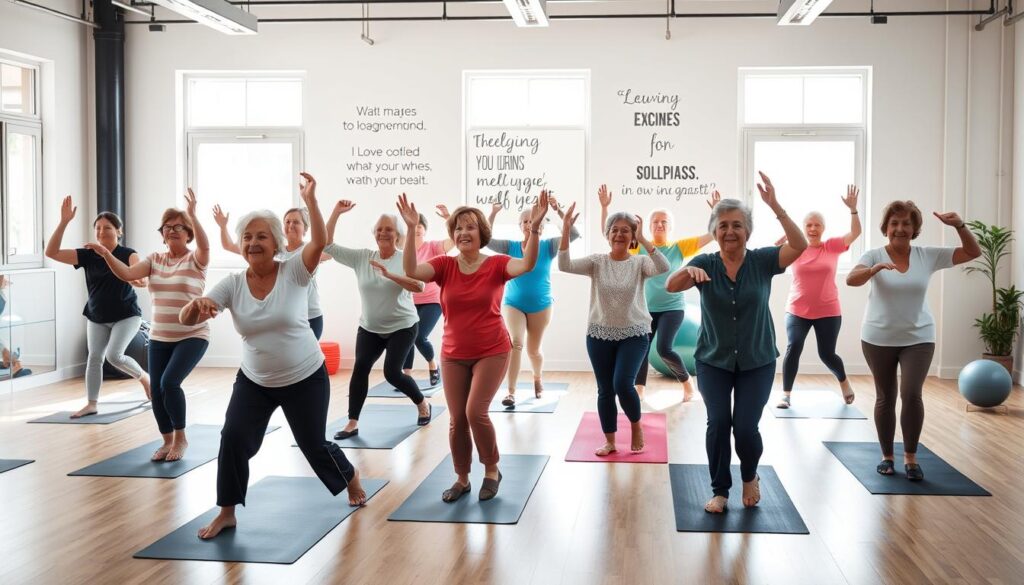
Building a senior women’s exercise program starts with balance. Mix strength, cardio, flexibility, and balance exercises. Tailor them to your goals. Here’s how to make a routine that fits you:
| Day | Activity | Duration |
|---|---|---|
| Monday | Strength training (squats, wall push-ups) | 20-30 mins |
| Wednesday | Walking or water aerobics | 30 mins |
| Friday | Yoga/stretching + balance drills | 20 mins |
“Strength training at this stage isn’t just about lifting weights—it’s about preserving independence.”
Choose programs like EnhanceFitness or SAIL. They have warm-ups and structured progressions. Start with light weights (5–8 lbs) and 12-rep sets. Mix in fun activities like Bingocize to stay motivated. For health needs, like arthritis, try water exercises to reduce joint stress.
- Incorporate 2-3 strength sessions weekly
- Add 150 mins of moderate cardio weekly
- Include flexibility exercises daily
Success in a senior women’s exercise program comes from being consistent, not intense. Start small and add more as you get stronger. Always check with your doctor, especially if you have conditions like osteoporosis. Every step you take boosts your energy and joy.
Nutrition to Support Your Fitness Routines for Older Women

Nutrition is key for energy and recovery in effective workouts for elderly ladies. Edna Giordano eats protein-rich meals and takes supplements. This boosts her energy and supports her active life. Let’s look at how to fuel your body for better results.
“Food is medicine.” – Edna Giordano
Pre and Post-Workout Fuel Recommendations
Eat light meals with protein and carbs before exercising for energy. Try:
- Plain Greek yogurt + berries (pre-workout)
- Whole-grain toast with almond butter (post-workout)
- A smoothie with spinach, banana, and protein powder
After working out, eat 15-20g of protein within 30 minutes to rebuild muscle. Salmon, tofu, or a hard-boiled egg are good choices.
Hydration Strategies for Mature Athletes
As you age, you might not feel thirsty as much. Drink 8–10 cups of water a day, more during workouts. Try:
- Sipping fluids every hour
- Eating water-rich foods like cucumbers or melon
- Add electrolytes if exercising over 60 minutes
Don’t ignore signs of dehydration like dry mouth or fatigue!
Supplements That May Benefit Active Older Women
Combine your effective workouts for elderly ladies with these supplements:
| Supplement | Why It Matters |
|---|---|
| Calcium & Vitamin D | Maintains bone strength, especially post-menopause |
| Omega-3s | Reduces inflammation from exercise |
| Protein powders | Helps preserve muscle mass |
Always talk to your doctor before starting new supplements.
USDA’s Smart Eating Patterns
| Pattern | Focus | Protein Sources |
|---|---|---|
| Healthy U.S.-Style | Varied American diet | Chicken, seafood, nuts |
| Mediterranean-Style | Seafood, fruits, olive oil | Sardines, tofu |
| Vegetarian | No meat/poultry | Soy, legumes, eggs |
Pair these patterns with regular strength training—like 2x/week—to get the best results.
Overcoming Common Workout Barriers for Elderly Ladies
Starting or sticking with an older women workout plan can feel overwhelming. Many worry about time, pain, or feeling too frail. But small changes make a big difference. Let’s tackle these challenges head-on with proven strategies.
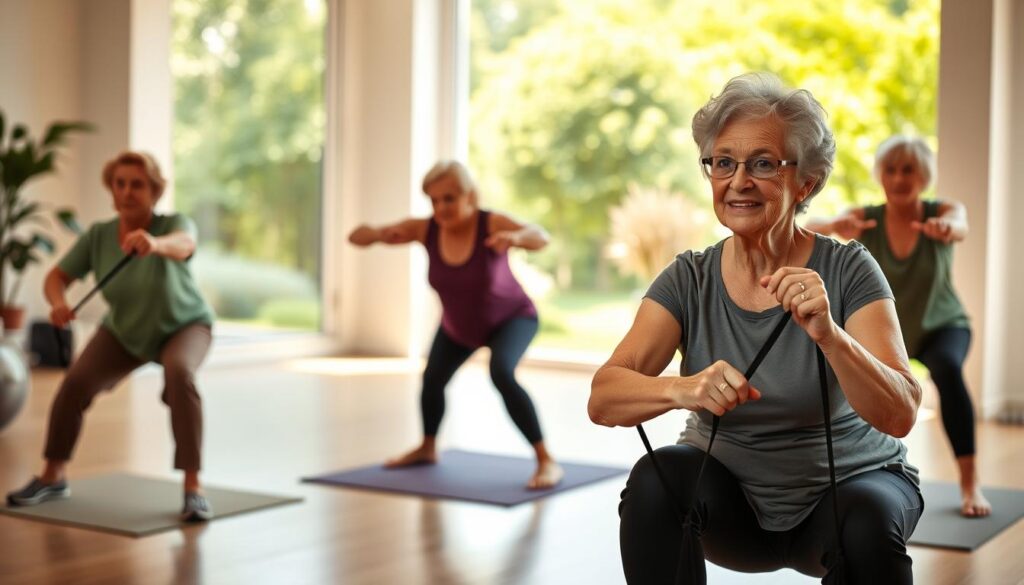
“Even a 10-minute walk can boost energy and confidence,” says the SDSU Extension’s Walk with Ease program, which helps seniors build endurance safely.
- Time Crunches: Break workouts into 10-minute chunks. A 15-minute morning stretch plus a 20-minute walk after lunch adds up.
- Pain or Health Concerns: Low-impact options like water aerobics or chair yoga protect joints. Check with your doctor first—most conditions like arthritis improve with gentle movement.
- Fear of Falling: Balance exercises like standing on one leg (holding a chair) build stability. Tai chi classes reduce fall risk by 40% per National Institute on Aging.
- Cost Concerns: Many community centers offer free or low-cost classes. Check local YMCAs or senior centers for discounted memberships.
- Lack of Motivation: Partner with a friend or join a virtual group. Accountability doubles your chance of sticking with it.
Remember: Every step counts. A 2023 study shows even light activities like gardening cut chronic disease risk by 30%. Start where you are—your body deserves to move.
Tracking Progress: Celebrating Small Victories
Every step you take in your fitness routines for older women is worth celebrating. It’s not just about losing weight. It’s about feeling better, moving easier, and living more fully every day. Tracking your small wins keeps you going and shows you why you’re working so hard.
![]()
- Track meaningful metrics like walking farther, lifting groceries with ease, or gardening longer without pain.
- Use tech tools like fitness apps (e.g., MyFitnessPal or Fitbit) to log steps, heart rate, or workout sessions.
- Journal daily to note energy boosts, better sleep, or moments of confidence.
| Method | What to Track | Why It Matters |
|---|---|---|
| Step Count | Distance walked daily | Shows improved endurance |
| Mood Journal | Energy levels, stress | Reveals mental health gains |
| App Data | Workout duration/intensity | Measures physical progress |
Science shows that 70% of older women feel happier when they track their progress. Celebrate every achievement, like reaching a new step goal or mastering a yoga pose. Each victory helps you keep moving forward.
Need a boost? Share your successes with friends—65% of women feel more motivated when they have support.
Remember, progress isn’t always smooth. You’ll face setbacks, but keep tracking. Your fitness routines for older women are a journey. Celebrate every milestone, no matter how small.
Conclusion: Embracing Vitality Through Movement at Any Age
Edna Giordano, a 92-year-old, shows us that aging doesn’t mean giving up. She feels as lively as she did years ago. Exercises for mature women can help you stay strong and active.
Strength training builds muscle, cardio boosts endurance, and yoga keeps joints flexible. Each workout helps you get stronger, balance better, and think clearer.
Even small efforts can make a big difference. Strength training twice a week can increase bone density by 1-3% each year. This reduces the risk of fractures.
Cardio activities like brisk walks or water aerobics also help. They ease stress and make you feel happier. These activities are more than just workouts. They help you stay independent.
The American College of Sports Medicine says 150 minutes of moderate activity a week can help. Adding resistance exercises can lower fall risks and improve mental focus.
Begin where you are. Talk to your doctor and choose activities you like. Celebrate every small success. Your body is worth caring for at any age.
Start today. Your future self will thank you for the choices you make now.








